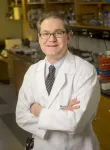(Press-News.org) Two out of five individuals delayed or missed medical care in the early phase of the pandemic--from March through mid-July 2020--according to a new survey from researchers at the Johns Hopkins Bloomberg School of Public Health.
The survey of 1,337 U.S. adults found that 544, or 41 percent, delayed or missed medical care during the survey period. Among the 1,055 individuals who reported needing medical care, 29 percent (307 respondents), indicated fear of transmission of COVID-19 as the main reason. Seven percent (75 respondents) reported financial concerns as the main reason for delaying or missing care.
The findings were published online in JAMA Network Open on January 21.
"Understanding the reasons individuals forgo care is important in order to design policy and clinical interventions to limit the extent of forgone care," says lead author Kelly Anderson, a doctoral student in the Department of Health Policy and Management at the Bloomberg School. "This is particularly relevant as COVID-19 cases are surging again."
During the initial phase of the COVID-19 pandemic, the U.S. health care system experienced major disruptions including the closures of medical practices, cancellation of elective procedures, and the shift of many health services to telehealth. As a result of the disruptions, many individuals missed or postponed medical care which can lead to increased health complications, cost, and delayed diagnosis.
The survey, part of Johns Hopkins COVID-19 Civic Life and Public Health Survey, was fielded from July 7 to July 22, 2020. The sample was drawn from NORC's Amerispeak Panel, a nationally representative online sample of U.S. households. Respondents were asked whether they missed several types of care, including doses of prescription medications, scheduled preventive care visits, scheduled outpatient medical or mental health visits, elective surgical procedures, or care for new severe physical or mental health issues.
Among the 1,337 survey respondents, 29 percent (387 respondents) reported missing a preventive care visit, 26 percent (343 respondents) reported missing an outpatient general medical appointment, 8 percent (108 respondents) reported missing one or more doses of a prescription medication, 8 percent (105 respondents) reported missing an outpatient mental health appointment, 6 percent (77 respondents) reported missing an elective surgery, and 3 percent (38 respondents) reported not receiving health care for a new severe mental or physical health issue.
Among the 1,055 individuals who reported needing medical care from March to mid-July 2020, more than half, 52 percent (554 respondents) reported missing care. Among those, 58 percent who had a scheduled preventive care appointment missed the appointment and 60 percent (77 respondents) with a scheduled elective surgical procedure forwent the procedure. Approximately half, 51 percent (38 respondents), of respondents with a new severe mental health or physical health issue that started after the start of the pandemic, reported not seeking care for a new health issue.
The survey also found disruptions to prescription medication. Among 725 respondents who reported taking a prescription medication, three times as many Hispanic respondents reported missing prescription medications compared to non-Hispanic, white respondents--30 percent (33 of 109 respondents) compared to 10 percent (50 of 482 respondents). Twenty-two percent of respondents from 18 to 34 reported missing prescription medication (45 of 204 respondents) compared to 6 percent of adults over 65 (10 of 160 respondents) and 16 percent of aged 35-49 (29 of 182 respondents). Twenty-seven percent of respondents in households with incomes less than $35,000 dollars a year reported missing prescription medications compared to 6 percent of respondents in households with higher incomes of at least $75,000 (66 of 244 respondents and 16 of 255 respondents). Thirty-six percent of individuals insured through Medicaid reported a higher frequency of missed prescription medications (41 of 114 respondents), as compared to 10 percent of individuals with commercial insurance (52 of 517 respondents).
Finally, among those who reported needing medical care, respondents who were unemployed reported higher frequencies of any forgone medical care (65 percent versus 50 percent, 121 of 186 respondents and 251 of 503 respondents, respectively), missed doses of medications (39 percent versus 13 percent, 46 of 117 respondents and 46 of 367 respondents, respectively), and missed scheduled appointments (70 percent versus 56 percent, 111 of 159 respondents and 225 of 405 respondents, respectively) as compared to individuals who were employed.
"These COVID-19-related interruptions in needed medical care will likely have longer term consequences beyond the pandemic--including exacerbating health disparities," says Colleen Barry, MPP, PhD, Fred and Julie Soper Professor, chair of the Department of Health Policy and Management at the Bloomberg School, and senior author on the study. "Our study indicates that many people are forgoing medical care for economic reasons, and this suggests that economic stimulus policies such as extension of unemployment benefits could also have important health benefits."
INFORMATION:
The survey was conducted in collaboration with the SNF Agora Institute at the Johns Hopkins University.
"Reports of Foregone Medical Care Among US Adults During the Initial Phase of the COVID-19 Pandemic" was written by Kelly Anderson, Emma McGinty, Rachel Presskreischer, and Colleen L. Barry.
The study was supported by the Johns Hopkins Bloomberg School of Public Health, the Johns Hopkins University Alliance for a Healthier World's 2020 COVID-19 Launchpad Grant, the Agency for Healthcare Research and Quality (T32HS000029), and the National Institute of Mental Health (T32MH109436).
Researchers from the University Hospitals in Zurich and Basel, ETH Zurich, University of Zurich and the pharmaceutical company Roche have set out to improve cancer diagnostics by developing a platform of state-of-the-art molecular biology methods. The "Tumor Profiler" project aims to derive the comprehensive molecular profile of tumours in cancer patients, which has the potential to predict the efficacy of a host of new cancer medications. It will therefore make it possible to offer treating physicians personalised and improved therapy recommendations.
Three years ago, the researchers began a large-scale clinical study involving ...
PROVIDENCE, R.I. [Brown University] -- When sheets of two-dimensional nanomaterials like graphene are stacked on top of each other, tiny gaps form between the sheets that have a wide variety of potential uses. In research published in the journal Nature Communications, a team of Brown University researchers has found a way to orient those gaps, called nanochannels, in a way that makes them more useful for filtering water and other liquids of nanoscale contaminants.
"In the last decade, a whole field has sprung up to study these spaces that form between 2-D nanomaterials," said Robert Hurt, a professor in Brown's School of Engineering and coauthor of the ...
TROY, N.Y. -- Warnings about misinformation are now regularly posted on Twitter, Facebook, and other social media platforms, but not all of these cautions are created equal. New research from Rensselaer Polytechnic Institute shows that artificial intelligence can help form accurate news assessments -- but only when a news story is first emerging.
These findings were recently published in Computers in Human Behavior Reports by an interdisciplinary team of Rensselaer researchers. They found that AI-driven interventions are generally ineffective when used to flag issues with stories on frequently covered ...
Among the materials known as perovskites, one of the most exciting is a material that can convert sunlight to electricity as efficiently as today's commercial silicon solar cells and has the potential for being much cheaper and easier to manufacture.
There's just one problem: Of the four possible atomic configurations, or phases, this material can take, three are efficient but unstable at room temperature and in ordinary environments, and they quickly revert to the fourth phase, which is completely useless for solar applications.
Now scientists at Stanford ...
Delivering a minor electric shock into a stream to reveal any fish lurking nearby may be the gold standard for detecting fish populations, but it's not much fun for the trout.
Scientists at Oregon State University have found that sampling stream water for evidence of the presence of various species using environmental DNA, known as eDNA, can be more accurate than electrofishing, without disrupting the fish.
"It's revolutionizing the way we do fish ecology work," said Brooke Penaluna, a research fish biologist with the U.S. Department of Agriculture Forest Service who also has an appointment in OSU's Department ...
If you believe you are capable of becoming the healthy, engaged person you want to be in old age, you are much more likely to experience that outcome, a recent Oregon State University study shows.
"How we think about who we're going to be in old age is very predictive of exactly how we will be," said Shelbie Turner, a doctoral student in OSU's College of Public Health and Human Sciences and co-author on the study.
Previous studies on aging have found that how people thought about themselves at age 50 predicted a wide range of future health outcomes up to 40 years later -- cardiovascular events, memory, balance, will to live, hospitalizations; even mortality.
"Previous ...
BIRMINGHAM, Ala. - A 72-year-old woman was hospitalized with severe COVID-19 disease, 33 days after the onset of symptoms. She was suffering a prolonged deteriorating illness, with severe pneumonia and a high risk of death, and she was unable to mount her own immune defense against the SARS-CoV-2 virus because of chronic lymphocytic leukemia, which compromises normal immunoglobulin production.
But when physicians at the University of Alabama at Birmingham recommended a single intravenous infusion of convalescent blood plasma from her son-in-law -- who had recovered from COVID-19 disease ...
Microscopy is the workhorse of contemporary life science research, enabling morphological and chemical inspection of living tissue with ever-increasing spatial and temporal resolution. Even though modern microscopes are genuine marvels of engineering, minute deviations from ideal imaging conditions will still lead to optical aberrations that rapidly degrade imaging quality. A mismatch between the refractive indices of the sample and its immersion medium, deviations in the thickness of sample holders or cover glasses, the effects of aging on the instrument--such deviations ...
Contemporary robots can move quickly. "The motors are fast, and they're powerful," says Sabrina Neuman.
Yet in complex situations, like interactions with people, robots often don't move quickly. "The hang up is what's going on in the robot's head," she adds.
Perceiving stimuli and calculating a response takes a "boatload of computation," which limits reaction time, says Neuman, who recently graduated with a PhD from the MIT Computer Science and Artificial Intelligence Laboratory (CSAIL). Neuman has found a way to fight this mismatch between a robot's "mind" and body. The method, called robomorphic computing, uses a robot's physical layout and intended applications ...
BOSTON - Regular aspirin use has clear benefits in reducing colorectal cancer incidence among middle-aged adults, but also comes with some risk, such as gastrointestinal bleeding. And when should adults start taking regular aspirin and for how long?
There is substantial evidence that a daily aspirin can reduce risk of colorectal cancer in adults up to age 70. But until now there was little evidence about whether older adults should start taking aspirin.
A team of scientists set out to study this question. They were led by Andrew T. Chan MD, MPH, a gastroenterologist and chief of the Clinical and Translational Epidemiology Unit at ...




